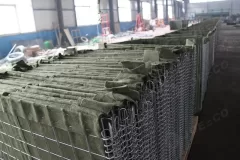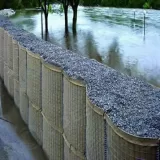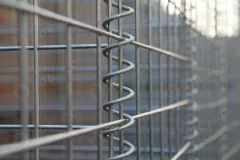Warning: mysqli_query(): open_basedir restriction in effect. File(/opt/rasp74/logs/plugin/plugin.log.2025-04-03) is not within the allowed path(s): (/www/wwwroot/www.militarybarrier.com/:/tmp/) in
/www/wwwroot/www.militarybarrier.com/wp-includes/class-wpdb.php on line
2345 Warning: mysqli_query(/opt/rasp74/logs/plugin/plugin.log.2025-04-03): failed to open stream: Operation not permitted in
/www/wwwroot/www.militarybarrier.com/wp-includes/class-wpdb.php on line
2345 Warning: [OpenRASP] 20002 Fail to open php_stream of /opt/rasp74/logs/plugin/plugin.log.2025-04-03! in
/www/wwwroot/www.militarybarrier.com/wp-includes/class-wpdb.php on line
2345 Warning: mysqli_query(): open_basedir restriction in effect. File(/opt/rasp74/logs/plugin/plugin.log.2025-04-03) is not within the allowed path(s): (/www/wwwroot/www.militarybarrier.com/:/tmp/) in
/www/wwwroot/www.militarybarrier.com/wp-includes/class-wpdb.php on line
2345 Warning: mysqli_query(/opt/rasp74/logs/plugin/plugin.log.2025-04-03): failed to open stream: Operation not permitted in
/www/wwwroot/www.militarybarrier.com/wp-includes/class-wpdb.php on line
2345 Warning: [OpenRASP] 20002 Fail to open php_stream of /opt/rasp74/logs/plugin/plugin.log.2025-04-03! in
/www/wwwroot/www.militarybarrier.com/wp-includes/class-wpdb.php on line
2345 Warning: mysqli_query(): open_basedir restriction in effect. File(/opt/rasp74/logs/plugin/plugin.log.2025-04-03) is not within the allowed path(s): (/www/wwwroot/www.militarybarrier.com/:/tmp/) in
/www/wwwroot/www.militarybarrier.com/wp-includes/class-wpdb.php on line
2345 Warning: mysqli_query(/opt/rasp74/logs/plugin/plugin.log.2025-04-03): failed to open stream: Operation not permitted in
/www/wwwroot/www.militarybarrier.com/wp-includes/class-wpdb.php on line
2345 Warning: [OpenRASP] 20002 Fail to open php_stream of /opt/rasp74/logs/plugin/plugin.log.2025-04-03! in
/www/wwwroot/www.militarybarrier.com/wp-includes/class-wpdb.php on line
2345 Warning: mysqli_query(): open_basedir restriction in effect. File(/opt/rasp74/logs/plugin/plugin.log.2025-04-03) is not within the allowed path(s): (/www/wwwroot/www.militarybarrier.com/:/tmp/) in
/www/wwwroot/www.militarybarrier.com/wp-includes/class-wpdb.php on line
2345 Warning: mysqli_query(/opt/rasp74/logs/plugin/plugin.log.2025-04-03): failed to open stream: Operation not permitted in
/www/wwwroot/www.militarybarrier.com/wp-includes/class-wpdb.php on line
2345 Warning: [OpenRASP] 20002 Fail to open php_stream of /opt/rasp74/logs/plugin/plugin.log.2025-04-03! in
/www/wwwroot/www.militarybarrier.com/wp-includes/class-wpdb.php on line
2345 Warning: mysqli_query(): open_basedir restriction in effect. File(/opt/rasp74/logs/plugin/plugin.log.2025-04-03) is not within the allowed path(s): (/www/wwwroot/www.militarybarrier.com/:/tmp/) in
/www/wwwroot/www.militarybarrier.com/wp-includes/class-wpdb.php on line
2345 Warning: mysqli_query(/opt/rasp74/logs/plugin/plugin.log.2025-04-03): failed to open stream: Operation not permitted in
/www/wwwroot/www.militarybarrier.com/wp-includes/class-wpdb.php on line
2345 Warning: [OpenRASP] 20002 Fail to open php_stream of /opt/rasp74/logs/plugin/plugin.log.2025-04-03! in
/www/wwwroot/www.militarybarrier.com/wp-includes/class-wpdb.php on line
2345 Warning: mysqli_query(): open_basedir restriction in effect. File(/opt/rasp74/logs/plugin/plugin.log.2025-04-03) is not within the allowed path(s): (/www/wwwroot/www.militarybarrier.com/:/tmp/) in
/www/wwwroot/www.militarybarrier.com/wp-includes/class-wpdb.php on line
2345 Warning: mysqli_query(/opt/rasp74/logs/plugin/plugin.log.2025-04-03): failed to open stream: Operation not permitted in
/www/wwwroot/www.militarybarrier.com/wp-includes/class-wpdb.php on line
2345 Warning: [OpenRASP] 20002 Fail to open php_stream of /opt/rasp74/logs/plugin/plugin.log.2025-04-03! in
/www/wwwroot/www.militarybarrier.com/wp-includes/class-wpdb.php on line
2345 PrevThe V-1 Missile: Germany’s Unmanned Flying Bomb During World War II Warning: mysqli_query(): open_basedir restriction in effect. File(/opt/rasp74/logs/plugin/plugin.log.2025-04-03) is not within the allowed path(s): (/www/wwwroot/www.militarybarrier.com/:/tmp/) in
/www/wwwroot/www.militarybarrier.com/wp-includes/class-wpdb.php on line
2345 Warning: mysqli_query(/opt/rasp74/logs/plugin/plugin.log.2025-04-03): failed to open stream: Operation not permitted in
/www/wwwroot/www.militarybarrier.com/wp-includes/class-wpdb.php on line
2345 Warning: [OpenRASP] 20002 Fail to open php_stream of /opt/rasp74/logs/plugin/plugin.log.2025-04-03! in
/www/wwwroot/www.militarybarrier.com/wp-includes/class-wpdb.php on line
2345 Warning: mysqli_query(): open_basedir restriction in effect. File(/opt/rasp74/logs/plugin/plugin.log.2025-04-03) is not within the allowed path(s): (/www/wwwroot/www.militarybarrier.com/:/tmp/) in
/www/wwwroot/www.militarybarrier.com/wp-includes/class-wpdb.php on line
2345 Warning: mysqli_query(/opt/rasp74/logs/plugin/plugin.log.2025-04-03): failed to open stream: Operation not permitted in
/www/wwwroot/www.militarybarrier.com/wp-includes/class-wpdb.php on line
2345 Warning: [OpenRASP] 20002 Fail to open php_stream of /opt/rasp74/logs/plugin/plugin.log.2025-04-03! in
/www/wwwroot/www.militarybarrier.com/wp-includes/class-wpdb.php on line
2345 Warning: mysqli_query(): open_basedir restriction in effect. File(/opt/rasp74/logs/plugin/plugin.log.2025-04-03) is not within the allowed path(s): (/www/wwwroot/www.militarybarrier.com/:/tmp/) in
/www/wwwroot/www.militarybarrier.com/wp-includes/class-wpdb.php on line
2345 Warning: mysqli_query(/opt/rasp74/logs/plugin/plugin.log.2025-04-03): failed to open stream: Operation not permitted in
/www/wwwroot/www.militarybarrier.com/wp-includes/class-wpdb.php on line
2345 Warning: [OpenRASP] 20002 Fail to open php_stream of /opt/rasp74/logs/plugin/plugin.log.2025-04-03! in
/www/wwwroot/www.militarybarrier.com/wp-includes/class-wpdb.php on line
2345 Warning: mysqli_query(): open_basedir restriction in effect. File(/opt/rasp74/logs/plugin/plugin.log.2025-04-03) is not within the allowed path(s): (/www/wwwroot/www.militarybarrier.com/:/tmp/) in
/www/wwwroot/www.militarybarrier.com/wp-includes/class-wpdb.php on line
2345 Warning: mysqli_query(/opt/rasp74/logs/plugin/plugin.log.2025-04-03): failed to open stream: Operation not permitted in
/www/wwwroot/www.militarybarrier.com/wp-includes/class-wpdb.php on line
2345 Warning: [OpenRASP] 20002 Fail to open php_stream of /opt/rasp74/logs/plugin/plugin.log.2025-04-03! in
/www/wwwroot/www.militarybarrier.com/wp-includes/class-wpdb.php on line
2345 Warning: mysqli_query(): open_basedir restriction in effect. File(/opt/rasp74/logs/plugin/plugin.log.2025-04-03) is not within the allowed path(s): (/www/wwwroot/www.militarybarrier.com/:/tmp/) in
/www/wwwroot/www.militarybarrier.com/wp-includes/class-wpdb.php on line
2345 Warning: mysqli_query(/opt/rasp74/logs/plugin/plugin.log.2025-04-03): failed to open stream: Operation not permitted in
/www/wwwroot/www.militarybarrier.com/wp-includes/class-wpdb.php on line
2345 Warning: [OpenRASP] 20002 Fail to open php_stream of /opt/rasp74/logs/plugin/plugin.log.2025-04-03! in
/www/wwwroot/www.militarybarrier.com/wp-includes/class-wpdb.php on line
2345 Warning: mysqli_query(): open_basedir restriction in effect. File(/opt/rasp74/logs/plugin/plugin.log.2025-04-03) is not within the allowed path(s): (/www/wwwroot/www.militarybarrier.com/:/tmp/) in
/www/wwwroot/www.militarybarrier.com/wp-includes/class-wpdb.php on line
2345 Warning: mysqli_query(/opt/rasp74/logs/plugin/plugin.log.2025-04-03): failed to open stream: Operation not permitted in
/www/wwwroot/www.militarybarrier.com/wp-includes/class-wpdb.php on line
2345 Warning: [OpenRASP] 20002 Fail to open php_stream of /opt/rasp74/logs/plugin/plugin.log.2025-04-03! in
/www/wwwroot/www.militarybarrier.com/wp-includes/class-wpdb.php on line
2345 Single twist barbed wireNext 






